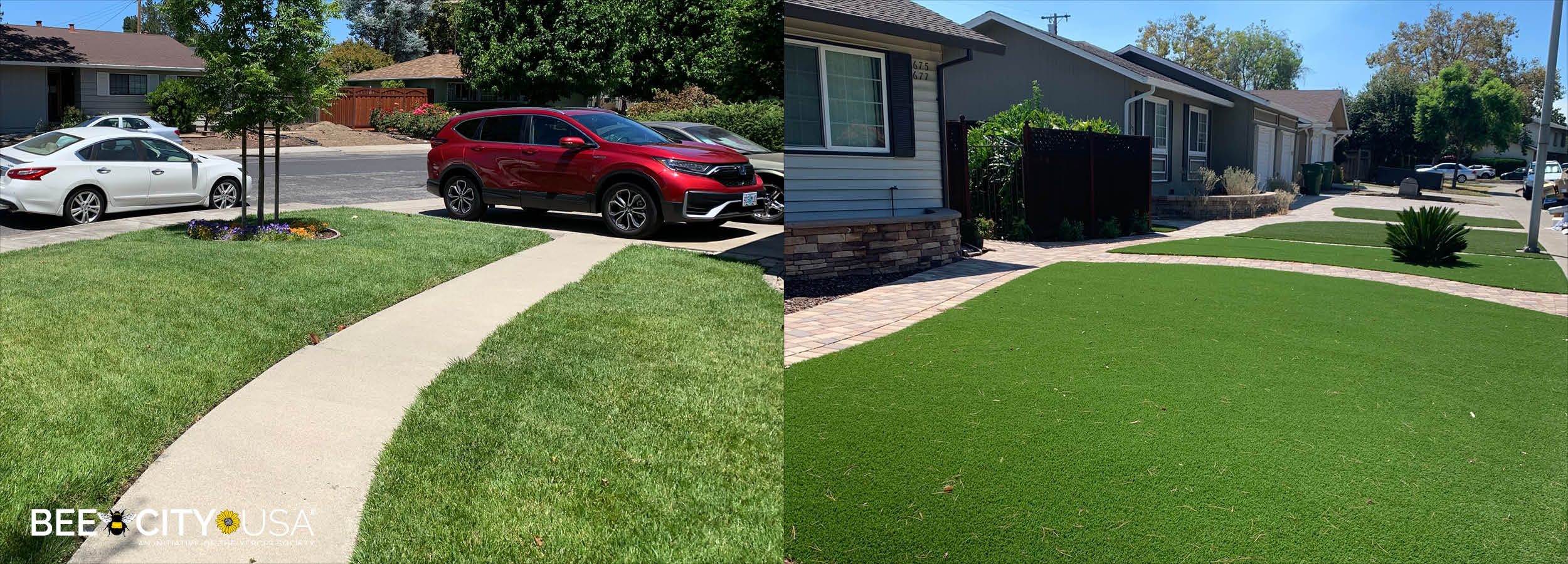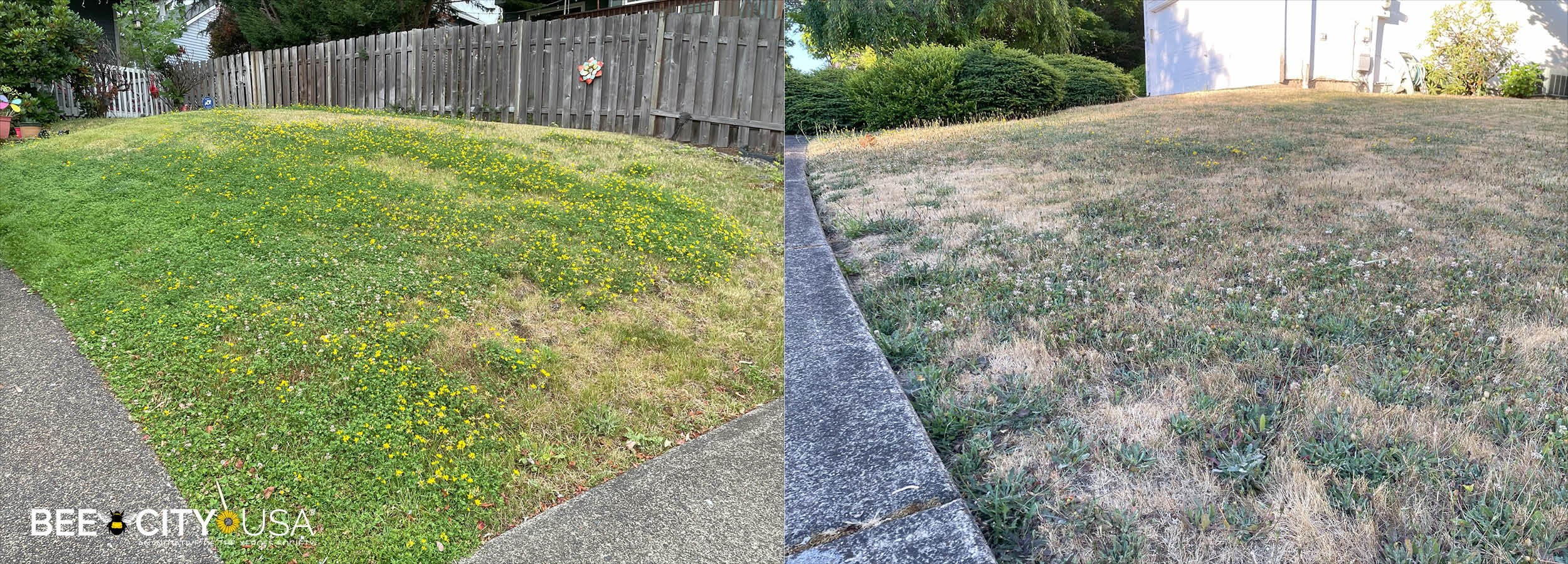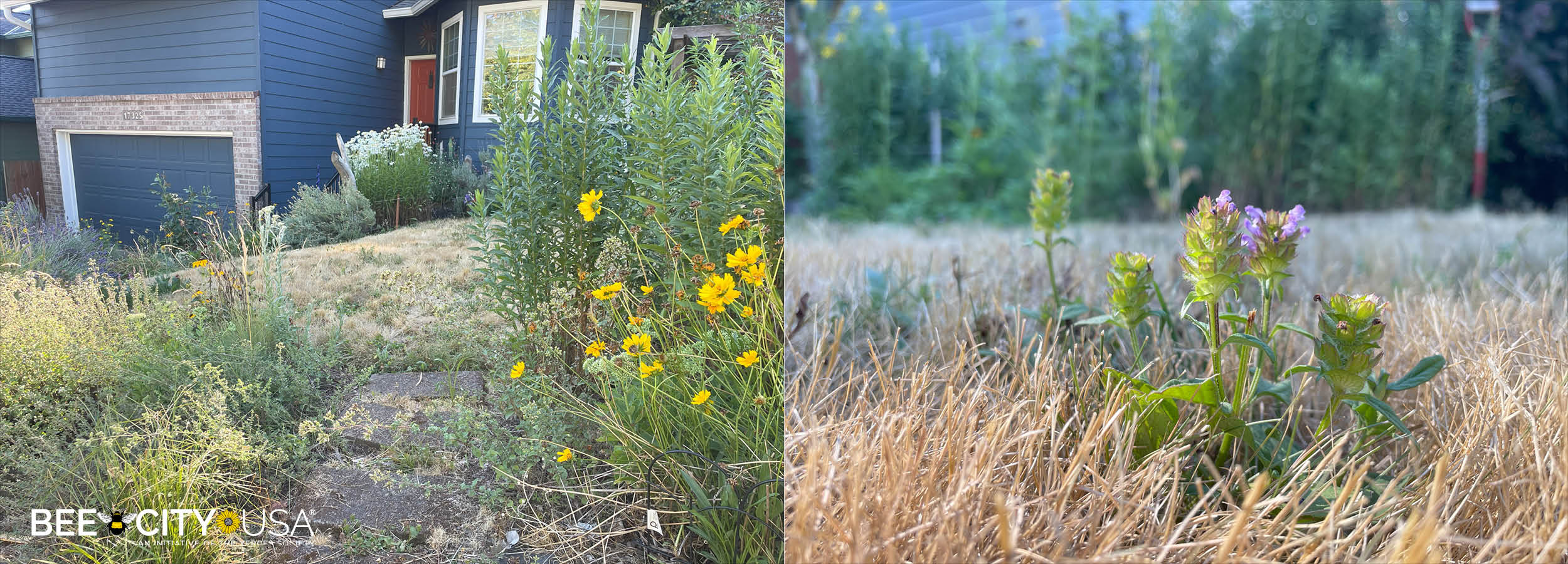By Matthew Shepherd
The lush green lawn has its roots in Europe, as a status symbol for Middle Age aristocrats: If you could have a garden that required considerable resources to maintain and had little or no practical use, you were obviously wealthy. Like many other things, the concept arrived in America with immigrants and over time, a house with an extensive lawn became seen as a symbol of stability and respectability. Lawns are still associated with success—and also remain an expensive feature to maintain. Pursuing the idealized image of the unblemished lawn demands fertilizer, insecticides, and water, not to mention the time to apply those and then to mow it short again (and again and again). It is estimated that each year Americans spend $60 billion on their lawns, and nearly half of homeowner water use goes on irrigating these green squares.

In New England, the Mid-Atlantic, Midwest, and Great Lakes regions, lawns may grow pretty well. Elsewhere, particularly in the western states—and especially the Intermountain and Southwest regions—the conditions are drier and it becomes harder to keep grass growing. Facing challenges with maintaining grass in a shifting climate, some homeowners are now opting for plastic turf, and there is also a burgeoning grass-painting industry.

Lawn care needs may vary greatly across the states, but one constant is that a manicured lawn has minimal wildlife value. This is not to say that we need to get rid of all lawns—although that would be a good thing for wildlife and we certainly encourage you to consider that—but we do need to be reassessing how we manage lawns and what value they bring as a component of our landscapes. An increasing number of communities are embracing No Mow May. This may be limited in its benefit for bees, but is great for stimulating a conversation about lawns. There are many efforts in the drier western states to reduce lawn area as a water-saving measure. You can also simply reduce the area of your lawn that you mow, keeping grass but allowing some patches to grow longer. In addition to saving you time and money, these can provide shelter for lady beetles and other beneficial insects, as well as fireflies. And who doesn’t love fireflies?
(If you are concerned about pests, you might like to know that some studies indicate that less intense mowing practices lead to fewer pests. If you are still concerned, Penn State Extension offers helpful advice on Neighborly Natural Landscaping in Residential Areas, a “myth-buster” about some of the common complaints about longer grass and wildlife-friendly gardening.)
One approach to bringing more diversity into a lawn is to seed it with a mixture of low-growing flowers. There are a number of online sources of information (such as this one for Minnesota), and a few commercially available seed mixes. You can also achieve greater flower diversity by what might be called benign neglect, at least compared to a typical lawn care regimen intended to create a grass-only sward. If you reduce chemical inputs and mow less often and higher, flowers will gradually return. Depending on what was there before, this could include prairie species or only non-native plants such as clover and bird’s-foot trefoil—be patient and watch your lawn to see what grows. With both of these approaches, you do need to control problem weeds. (This may include dandelions, which have pollen that provides poor nutrition for bees and is known to suppress growth of other flowers.) Although a flowering lawn has benefits for bees, these mainly accumulate from changing lawn care permanently, and are limited in comparison with a more natural landscape. Ideally, we’d move beyond the lawn.

A prairie or meadow garden is an option for much of the U.S. These can be suitable for private gardens, as well as parks and business campuses. Anywhere that a lawn grows could be a prairie or meadow (even on a rooftop). Guides exist for how to do this (for example, here’s one for Pennsylvania) and the Xerces Society has detailed guidelines on converting lawns to meadows and also establishing a meadow in your garden from seed. For those areas in which lawns simply don’t grow, xeriscaping with desert plants is a good option.

You can also reduce the area of lawn and replace it with flower borders, which is what I’ve been doing in my own garden. Where I live in the Willamette Valley of western Oregon, the climate—despite the state’s reputation for rain—is naturally summer-dry. We have several back-to-back months with very little rain, a season in which prairies turn brown. To keep a lawn green through the summer requires about 1 inch of water per week. I allow my lawn to mirror the local prairies and go dormant for a couple of months. The grass is brown, but plants such as clover and selfheal retain some color. Over the years, we’ve made the lawn smaller and smaller and gradually expanded the surrounding flower borders. These have drought-tolerant native flowers and other deep-rooted plants that provide ongoing bloom and habitat, as well as native bunch grasses. I water these four or five times in the dry season, with additional spot watering by hand to help new plants establish.
My lawn will soon be gone entirely. The challenge, however, is deciding what flowers to plant in its place. Climate change is taking a firmer grip and our summers are becoming hotter and drier, with more weeks separating the rain of spring and fall. Will my current approach to summer gardening continue to work or do I need to experiment with different species?

If we want neighborhoods that will support bees and other pollinators (and a host of other wildlife as well), we need to be thinking about how we manage our landscapes all year. Landscaping that reflects nature is not a new idea. A century ago, the landscape architect Jens Jensen was creating natural gardens that incorporated prairies. This was not a fringe movement. Jensen worked with Frank Lloyd Wright (who pioneered the Prairie School of architecture) and others, and created landscapes for the wealthy, including members of the Ford family. If someone questions why your garden doesn’t look like a lawn care advert, tell them that you are reclaiming an American tradition!
Further reading
- Conservation guidelines – Mid-Atlantic Native Meadows: Guidelines for Planning, Preparation, Design, Installation, and Maintenance
- Fact sheet – Establishing Pollinator Meadows from Seed
- Fact sheet – Collecting and Using Your Own Wildflower Seed to Expand Pollinator Habitat
- Pollinator-friendly plant lists for all regions of US
- Blog – No Mow May: A Gateway to Better Landscape Management for Bees
Author
Matthew Shepherd

Matthew has spent more than 35 years working with people from all walks of life to create better places for wildlife. His career began in England and took him to Kenya before his arrival in the United States. He has worked for the Xerces Society for over two decades, initially at the vanguard of the movement to protect pollinators, but he shifted to communications, and now community engagement and conservation in towns and cities. Matthew is author of numerous articles and other publications, including Attracting Native Pollinators (Storey Publishing, 2011) and Gardening for Butterflies (Timber Press, 2016).





